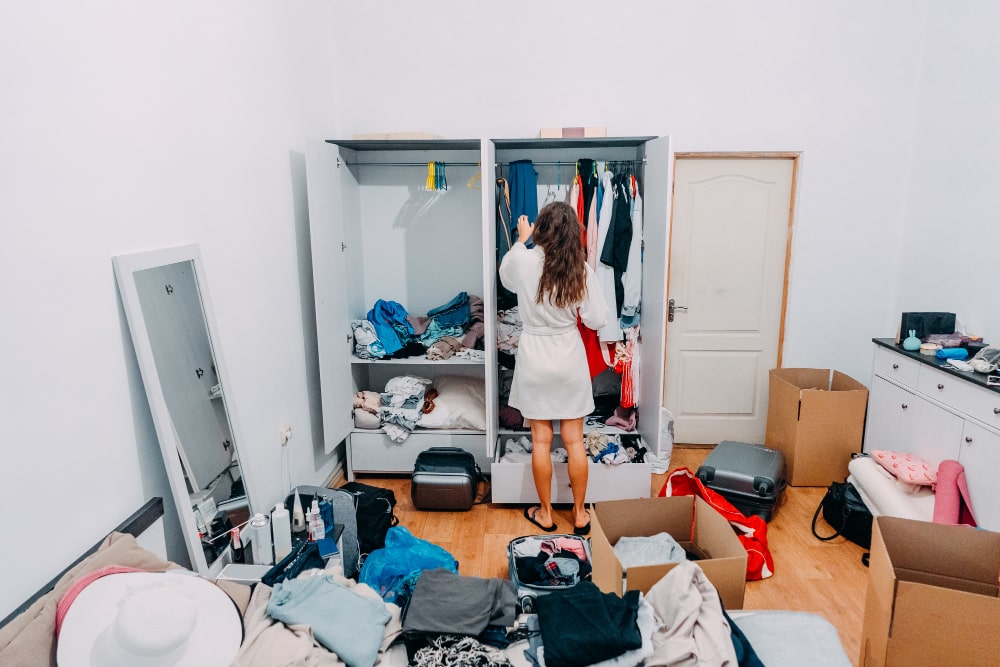If you’re overwhelmed with clutter and dealing with resistance from loved ones, this guide is here to help. You’re not alone. Decluttering can be a challenging process, and it becomes even harder when friends and family don’t share your enthusiasm for a more organized, minimal lifestyle.
The good news? With patience, understanding, and the right strategies, you can make progress toward creating a calm and clutter-free space—even if others aren’t ready to join you just yet. This guide will help you navigate these challenges, providing practical tips to address resistance, communicate effectively, and declutter with confidence.
1. Overwhelmed with Clutter? Understand Their Attachment to Items
The first step in addressing resistance is understanding why friends and family may be attached to certain items. Emotional attachment, fear of waste, or simply feeling overwhelmed by the idea of decluttering can all contribute to reluctance.
Tips for Addressing Clutter Resistance with Loved Ones
- Listen to Their Concerns: Ask family members why they want to hold onto certain items. Their reasons could be emotional, practical, or even related to a sense of security.
- Acknowledge Sentimental Value: Recognize the sentimental value of certain belongings, even if you may not feel the same attachment. This can help build empathy and trust.
- Explore the “Just in Case” Mentality: Many people hold onto items “just in case” they might need them someday. Gently encourage them to consider if the item is truly necessary or if there are other ways to meet future needs.
Understanding why others are attached to items is essential to creating a supportive environment and may help reduce friction during the decluttering process.
Read more on the psychology of clutter: Why We Hold Onto Clutter – Psychology Today
2. Decluttering When Overwhelmed with Clutter: Lead by Example
If you’re feeling overwhelmed with clutter, start by organizing your own items to inspire others.
Ways to Lead by Example
- Declutter Visible Areas: Start with spaces where your efforts will be noticeable, such as your side of the bedroom, your desk, or your closet.
- Create “Before and After” Spaces: Document the transformation by taking photos before and after you declutter. This can highlight the positive changes and inspire others.
- Share the Benefits: Talk about the positive impact decluttering has on your own well-being, focus, or mood. Sharing the personal benefits might help family members appreciate why it matters to you.
By focusing on your own belongings, you show your family that decluttering isn’t about imposing rules on them—it’s about creating a space that feels lighter and more organized for everyone.
3. Respect Boundaries and Solve Clutter Conflicts
It’s important to remember that decluttering is a personal journey, and forcing others to join can lead to conflict. Instead, work to respect their boundaries while finding compromises that keep shared spaces organized. Many people are overwhelmed with clutter because they don’t know where to start. Breaking it into small steps can make it manageable.
How to Approach Compromise in Shared Spaces
- Set Up Designated Spaces: Designate areas where family members can keep items without interference. This way, you can keep clutter in specific areas rather than having it spread throughout the home.
- Divide the House into Zones: In shared spaces, create clear zones for each person’s belongings. For example, set up individual shelves or bins for each family member.
- Agree on Decluttered Common Areas: Propose keeping certain shared spaces, like the living room or kitchen, clutter-free. Suggest that other areas, like bedrooms or hobby spaces, can be more flexible for individual preferences.
Compromises like these help maintain harmony and respect for everyone’s space while gradually moving toward a more organized home.

